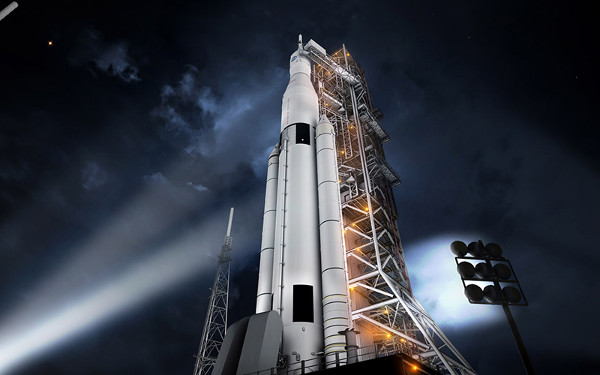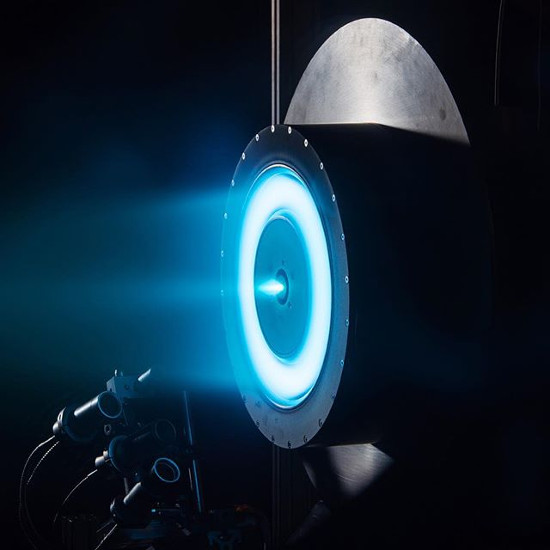Technologies that help NASA conquer Mars
In the plan to bring people to Mars in the 2030s called Journey To Mars, the US Aerospace Agency (NASA) outlines support technologies that have the potential to grow in the coming decades.
Technologies that support humans to conquer Mars
Huge rocket launcher

Space rocket launch system (Space Launch System) by NASA.(Photo: NASA / MSFC).
NASA's Space Launch System (Space Launch System - SLS) is a space shuttle missile model, which may be ready to take off in early 2018. When it leaves the launch pad, it can carry 70 tons of cargo. to orbit. At a later stage, it can transport cargo weight up to 130 tons on the journey to Mars, according to PopSci.
At 116m high, SLS will be the largest launcher ever built, more powerful than the Saturn V rocket that sent Apollo crew to the Moon. According to NASA, the weight of the SLS "far exceeds the capabilities of commercial launch facilities that have been and are about to be built".
Solar electric motor

Engines that use solar electric propulsion can push the spacecraft at 320,000 km / h.(Photo: NASA).
SLS rocket works by burning hydrogen fuel and liquid oxygen. However, the SLS can only send astronauts to orbit Earth. For a 7-month journey to Mars, the use of liquid fuel requires missiles to have huge tanks, making the launch cost extremely high. Instead, NASA can use solar energy to transport goods and bring astronauts to Mars.
Solar Electric Propulsion (Solar Electric Propulsion) helps the spacecraft move by firing ions backwards. Electrons turn xenon gas into plasma and an electromagnetic field will accelerate molecules until they fire out of the engine at high speed. Solar energy will provide enough electrons for this process to take place.
Solar electric motors do not produce a powerful discharge force such as rocket fuel, which helps speed up over time and can reach 320,000 km / h. This ion engine is also very efficient using 10 times less fuel than rocket fuel.
House on Mars

NASA wants to create a housing complex attached to the Orion spacecraft.(Photo: NASA).
Due to the three-year mission to Mars, NASA was unable to let astronauts live in the Orion spacecraft during this time, but have to provide more living space (and bathrooms) for astronauts, copper the time where they lived on Mars. This housing design needs good support for living, preventing fire and radiation protection, and providing space for astronauts to exercise and work.
The inflatable housing design of the Bigelow Aerospace company in the US and the idea of NASA's Deep Space Habitat housing can provide a premise for the design of these houses.
Flexible cosmic costumes

New generation cosmic costumes can integrate real-world interactive technology, self-mending materials and biological parameters monitoring equipment.(Photo: NASA / Douglas Sonders).
Astronauts can live a year or longer on Mars. During that time, they will travel on the surface of the planet, explore and collect data. Cosmic costumes must help protect astronauts from radiation as well as Mars's thin and cold atmosphere and allow them to work, move freely. The protective attire of astronauts is too cumbersome, inconvenient, and special, making it difficult for them to move their hands. Researchers are designing outfits to make traveling and working on Mars easier.
The outfit can integrate real-world interactive technology, self-mending materials and mounting biological parameters monitoring equipment. NASA plans to test a new generation cosmic outfit in the Meteorite Deflection Project in the 2020s.
Laser communication system

Laser communication systems can provide powerful data transmission at rates of billions of bits per second.(Photo: NASA).
The closest distance between Mars and Earth is 55 million km. According to NASA reports, Mars probe robots can receive and transmit data at about two million bits per second. The International Space Station's data transfer rate is 300 million bits per second, while in order to be able to guide and land on Mars, NASA needs a stronger transmission at 1 billion bits per second. NASA's solution is to use lasers.
In an experiment in 2013, the laser communication system allowed the Lunar Explorer LADEE satellite to download information at a rate of 622 million bits per second. Other designs can transmit data to Saturn at a rate of several billion bits per second.
- NASA equipped lasers for Mars to explore Mars
- The 'formidable opponents' of SpaceX, NASA in the race to conquer Mars
- NASA is about to launch new Mars explorer robots: Find alien life
- 706 people won 4 tickets to Mars
- 'Turning into food' may be the key to bringing people to Mars
- Journey to conquer human Mars
- What do people prepare for the work of taking people to Mars?
- Is it possible to do 'that' on Mars?
- How do people prepare to go to Mars?
- India will conquer Mars
- NASA tested the spacecraft to send people to Mars
- New discoveries are making NASA's hopes of conquering Mars difficult to succeed
 Van Allen's belt and evidence that the Apollo 11 mission to the Moon was myth
Van Allen's belt and evidence that the Apollo 11 mission to the Moon was myth The levels of civilization in the universe (Kardashev scale)
The levels of civilization in the universe (Kardashev scale) Today Mars, the sun and the Earth are aligned
Today Mars, the sun and the Earth are aligned The Amazon owner announced a secret plan to build a space base for thousands of people
The Amazon owner announced a secret plan to build a space base for thousands of people